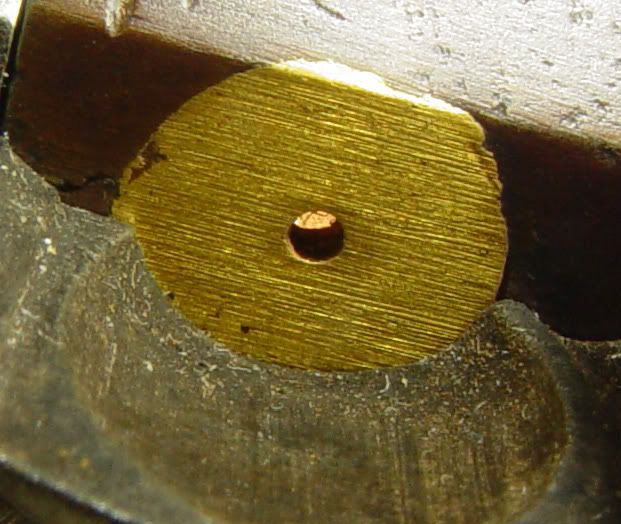Gold was commonly used on the upscale pieces. It's shiny inside the hole where it's unlikely anyone polished it lately - I'd say it's gold.
Wogdon had quite a reputation as a duelling pistol maker, and his "trick" barrel was bent down in the last few inches so the ball exited on a line that was parallel to the sight line. He swamped the barrels (quite a bit) so when inletted into a full stock it was impossible to see that the barrel was bent without removing it from the stock.
The reason for the bent barrel was that the sight line on a typical barrel of the day - thick at the breech and thin at the muzzle - would intersect the path of the ball at only one point. (Unless you had a very tall front sight, and duelling pistols were meant as snap shooters anyway - you didn't really use the sights so the top of the barrel was your guide.)
With the bent barrel the sight line was a set distance above the path of the ball throughout the flat part of the trajectory. Probably this made a difference in the shooting parlors, where most duelling pistols were used, to impress everyone and get the word out that you were too dangerous to challenge to a duel.
Later makers, like the Mantons, used a barrel that was the same diameter thoughout, so the top of the barrel was automatically parallel to the ball path. This gave the additional advantage of mass out at the muzzle, which reduced the effect of recoil on your aim.
As far as I know, Wogdon was the only one to use a bent barrel (he made his own barrels, by the way, which was very unusual).








